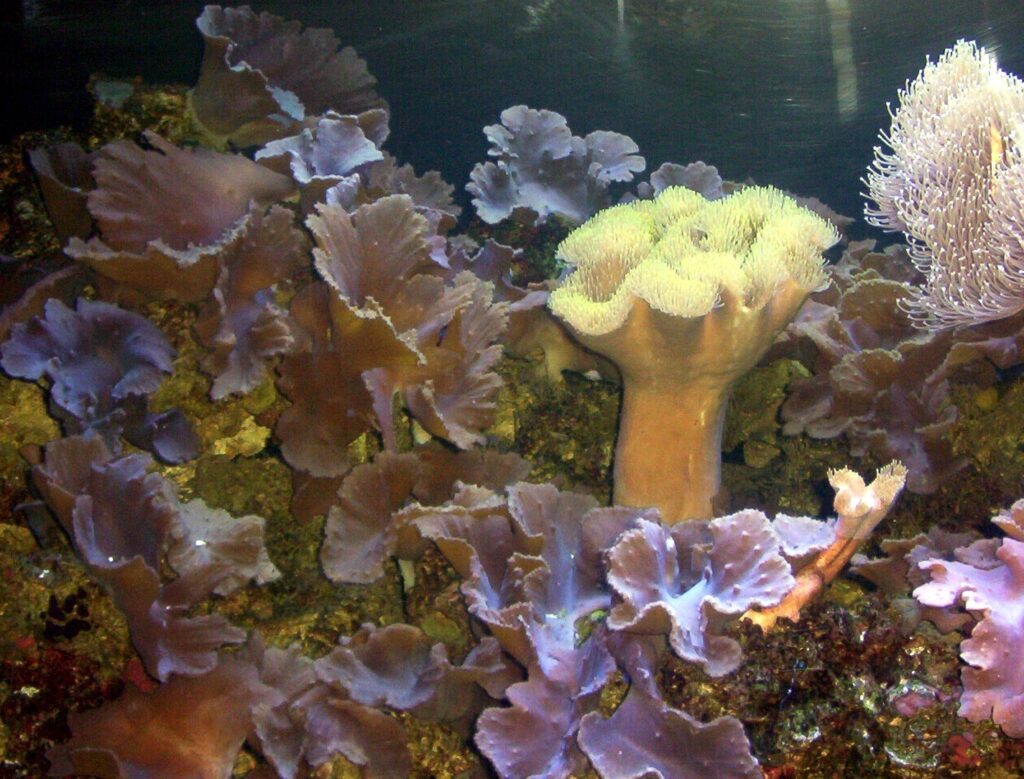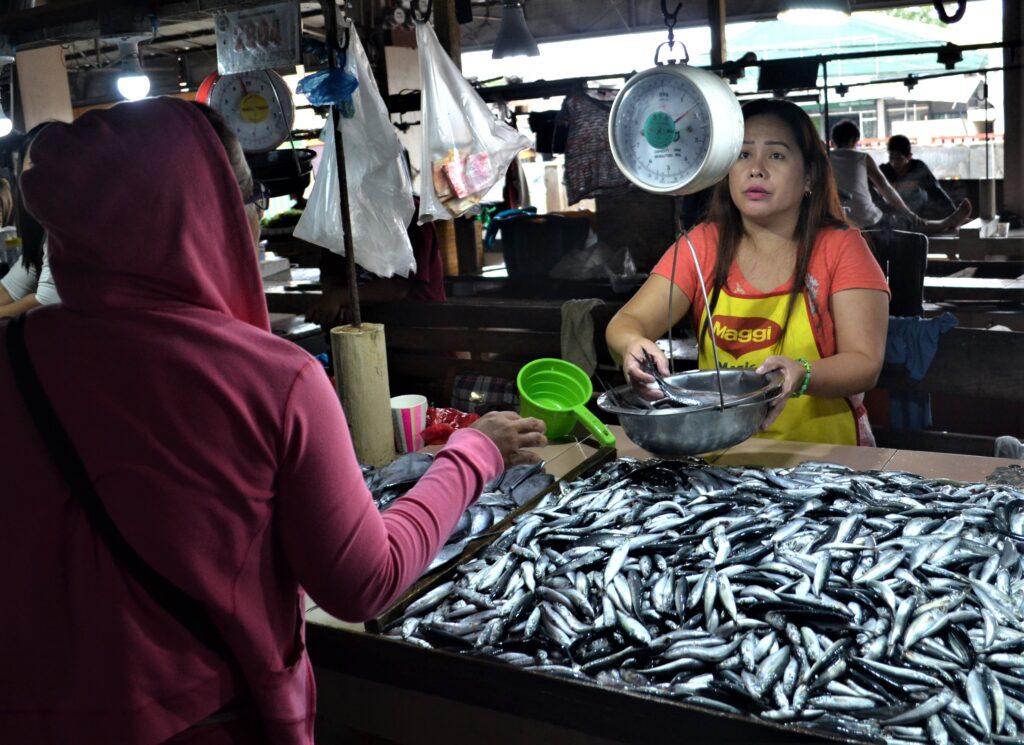Text and Photos by Henrylito D. Tacio
In the 1950s, the average fish catch in the Philippines was “more than 10 kilograms a day.” It went down to “less than 5 kilograms a day” in the 1990s due to decades of overfishing, catching of juvenile fish, and use of illegal fishing methods, according to Jimely Flores, senior marine scientist of Oceana Philippines.
Those causes cited are rampant and transparent. But the main culprits are actually rapid population growth and government neglect in preserving the life-sustaining coastal ecosystem since the postwar years.
The Philippines is currently home to 111,661,829 Filipinos, based on projections of the latest United Nations data. Each day, about 5,000 Filipinos are added daily to the current population.
Meanwhile, the coastal zones of the country encompass approximately 17,000 kilometers of coastline. It includes mangrove forests, tidal flats, estuaries, island ecosystems, coral reefs, and beaches.
Vanishing mangroves
In 1980, the Philippines was among the ten countries with the largest mangrove areas in Asia. At that time, it had 146,000 hectares of mangrove forests. By 1988, however, the area went down to 38,000 hectares. The country had some 500,000 hectares of mangroves in 1920.
“All over the country, whatever coastal province you visit, you see the same plight – desolate stretches of shoreline completely stripped of mangrove cover and now totally exposed to the pounding of ocean’s waves,” commented a Filipino environmentalist.
The Department of Environment and Natural Resources (DENR) reported that most of the remaining vegetated mangrove areas in the country today are second-growth, containing other than the original species.
Dr. Theresa Mundita Lim, who was then the director of DENR’s Biodiversity Management Bureau, said its agency had identified 42 species of mangroves in the country. None of them are facing extinction yet. But the International Union for Conservation of Nature (IUCN) is considering of putting 11 out of 70 mangrove species assessed on the IUCN Red List of Threatened Species.
“Mangroves form one of the most important tropical habitats that support many species, and their loss can affect marine and terrestrial biodiversity much more widely,” pointed out Beth Polidoro, who led the first-ever global assessment on the conservation status of mangroves.
Mangroves are very important to marine life, says Dr. Rafael Guerrero III, former director of the Philippine Council for Aquatic and Marine Research and Development (PCAMRD). They serve as sanctuaries and feeding grounds for fish that nibble on detritus (fallen and decaying leaves) trapped in the vegetation and on the bark and leaves of living trees.
“(Mangroves) are important feeding sites for many commercially important fish species (mullet, tilapia, eel, and especially milkfish), shrimps, prawns, mollusks, crabs, and sea cucumbers,” a World Bank report on environment added. “Fry that gather in mangrove areas are very important for aquaculture.”
Coral reefs on the brink
On land, the ecosystem supports the greatest number of plant and animal species in the rainforest. In the sea, it’s the coral reef. But unlike their counterparts, coral reefs have not been given much importance by people since they could not be seen.
“When trees are cut and human beings are affected as a result of flash floods, people rallied against deforestation,” explained Dr. Bernhard Riegel, associate director of the National Coral Reef Institute in the United States. “But like forests, coral reefs are also suffering the same magnitude of destruction.”
“One of the greatest natural treasures, (coral reefs) are habitats for rare species, including some 488 species of corals, 971 species of benthic algae, and 2,000 species of fish,” explains Dr. Miguel D. Fortes, a professor at the Marine Science Institute of the University of the Philippines. “A single reef may contain 3,000 species of corals, fish, and shellfish.”
Studies have shown that a single reef can support as many as 3,000 species of marine life. As fishing grounds, they are thought to be 10 to 100 times as productive per unit area as the open sea.
The Philippines has the distinction of being home to more than 400 of the 700 coral reefs known to man. Unfortunately, most of these reefs are in a sad state of destruction. Unless something is done soon to stop their destruction, fish production may collapse.

Coral reefs 
Buying fish
It seems to be happening in Davao City already. But no one seems to feel it yet. In the past, Bago Aplaya used to be a haven for fish in the city. “When I was still younger,” 53-year-old Ronnie Estrera recalled, “we used to catch a lot of fish. But it’s the case anymore today.”
“We are running out of fish and running out of time. For a country known for marine biodiversity, there are very few fish left to catch,” Vince Cinches, Oceans Campaigner for Greenpeace Southeast Asia, was quoted as saying.
Neglected seagrasses
Seagrasses receive little attention like coral reefs. But like mangroves, they act as a buffer to winds and provide habitats and shelter for many invertebrates and fishes. They also serve as filters to sewage, reducing the effects of pollution on coral reefs and mangroves.
Seagrasses are said to be the “last frontier” of the country’s basic marine needs. Unfortunately, they are being destroyed at a very alarming rate.
“In spite of the ecological and economic value of seagrasses, between 30% to 50% of the seagrass beds have been lost due to industrial development, ports, and recreation in the last 50 years,” deplored Dr. Lim.
Dr. Miguel D. Fortes, the country’s foremost expert on seagrasses, echoed the same concern. “Despite their high biodiversity and abundance, seagrass habitats are still poorly understood in our country,” he said. “Hence, it appears only marginally useful when, in fact, the ecosystem plays significant economic and ecological roles.”
The Philippines has 18 species of seagrasses thriving along its coasts. This makes the Philippines as having the second-highest species of seagrasses around the world. Western Australia leads — with more than 30 species of seagrasses.
Seagrasses provide food and shelter for many organisms and are a nursery ground for commercially important prawn and fish species. The high primary production rates of seagrasses are closely linked to the high production rates of associated fisheries.
Among the diversified species found in the seagrass beds are fishes, sea cucumbers, sea urchins, crabs, scallops, mussels, and snails. Shrimps spend the early stages of their lives in seagrass areas. Large animals like sea cows (dugong) and green sea turtles graze extensively in seagrass beds.
Seahorses, a tourist attraction and of medicinal value, reside in seagrass beds. A study done in five seagrass sites in the country identified a total of 1,384 individuals and 55 species from 25 fish families.
Climate change
Aside from the destruction of the primary fishery sanctuaries of coastal ecosystems, climate change has also been cited by fishery experts as another important factor affecting fisheries. “The level of impacts varies widely and depends on attributes of the species as well as on their regional specificity,” said the Intergovernmental Panel on Climate Change (IPCC).
Changes in ocean circulation, the UN-sponsored body explained, may lead to the loss of certain populations or the establishment of new ones.
Among those fishes that will be greatly affected by climate change are the pelagic fish stocks. They exhibit unique spatial and temporal distribution patterns related to their bioclimatic niche.
“Climate changes and associated shifts in primary and secondary production have therefore impacted on the distribution range, migratory habits and stock size of many marine fish species,” climefish.eu explains.
Take the case of tuna. Some years back, the General Santos City tried to break the previous record of the Guinness Book of World Records for the largest display of tuna at its landing port. Although they failed to make it, they discovered something more alarming: the fish caught were getting smaller.
In the past, fishermen used to catch tuna fish as heavy as 60-70 kilograms. But these days, the biggest they had caught weighed only 35-40 kilograms. “That’s concrete evidence that the fish are getting smaller,” said the spokesperson of the Alliance of Tuna Handline Operators.
Research published in the journal Nature Sustainability found out that climate is causing tuna to migrate, which could spell catastrophe for those who depend on them. “If ocean warming continues at current rates, the tuna catch… is expected to decline by an average of 20% by 2050,” the study said.

